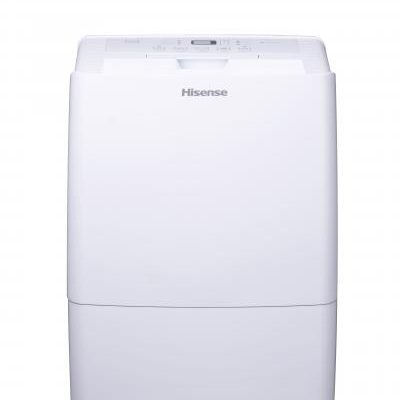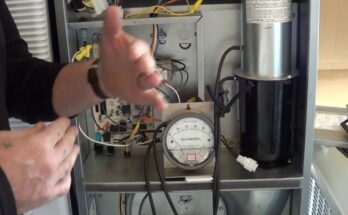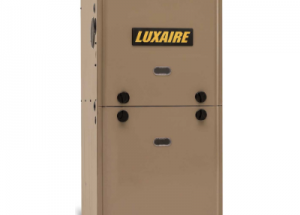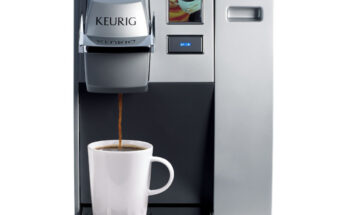**Hisense Dehumidifier Troubleshooting** Ensure the dehumidifier is plugged in and the power is on. Check the water tank for proper placement.
**Introduction** Hisense dehumidifiers are popular for their efficiency and reliability. Yet, like any appliance, they can encounter issues. Troubleshooting common problems can save time and money. Users often face issues like the unit not turning on, poor humidity extraction, or error codes.
Simple checks can resolve many of these problems quickly. Ensuring the device is plugged in and the water tank is correctly placed often solves power issues. Regular maintenance, like cleaning filters and checking settings, can enhance performance. Proper troubleshooting ensures your dehumidifier operates efficiently, maintaining a comfortable home environment.
Common Issues
Owning a Hisense dehumidifier can help keep your home comfortable. But sometimes, these machines face problems. Here, we will discuss some common issues. This will help you fix them quickly and efficiently.
Unit Not Turning On
Sometimes, your Hisense dehumidifier may not turn on. This can be due to several reasons. Here are a few checks you can perform:
- Power Supply: Ensure the unit is plugged in properly.
- Power Outlet: Test the outlet with another device.
- Fuse or Circuit Breaker: Check for a blown fuse or tripped breaker.
If these steps don’t work, there could be an internal issue. You might need to contact Hisense customer support.
Water Tank Problems
Water tank issues are common with dehumidifiers. Here are some possible problems and solutions:
| Problem | Solution |
|---|---|
| Tank Full Indicator On | Empty the water tank. Ensure it is placed back correctly. |
| Leaking Water | Check for cracks in the tank. Ensure the tank is seated properly. |
| Tank Not Fitting | Ensure nothing is blocking the tank. Reinsert it correctly. |
These steps can resolve most water tank issues. If the problem persists, the tank might need replacement.
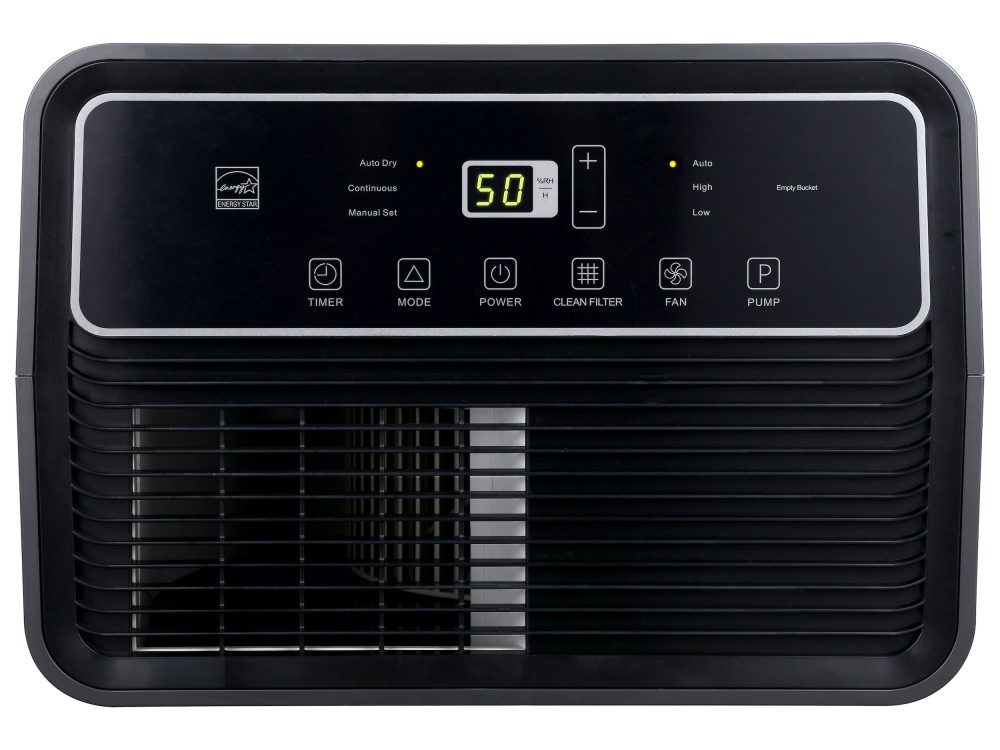
Credit: www.hisense-usa.com
Error Codes
Understanding the error codes on your Hisense dehumidifier can be crucial. These codes help identify specific issues. Knowing what each code means can save time and effort. Below, we break down some common error codes.
E1 Code
The E1 code indicates a problem with the humidity sensor. This sensor measures the air’s moisture levels. If you see the E1 code, follow these steps:
- Turn off the dehumidifier.
- Unplug the unit from the power source.
- Check the sensor for dust or debris.
- Clean the sensor gently using a soft cloth.
- Plug the unit back in and restart.
If the E1 code persists, the sensor might need replacement. Contact Hisense customer support for further assistance.
E9 Code
The E9 code signals a water tank issue. It could mean the tank is full or not correctly seated. Here’s how to resolve the E9 code:
- Turn off the dehumidifier.
- Remove the water tank carefully.
- Empty the tank if it is full.
- Reinsert the tank properly.
- Restart the dehumidifier.
If the E9 code still appears, inspect the tank for damages. A damaged tank may need replacement. Reach out to Hisense support for guidance.
Poor Performance
Is your Hisense dehumidifier not performing well? Let’s troubleshoot common issues. Follow this guide to solve performance problems quickly and easily.
Low Humidity Removal
If your Hisense dehumidifier is not removing enough humidity, check these points:
- Filter: Clean or replace the filter. A dirty filter blocks airflow.
- Room Size: Ensure the dehumidifier is suitable for the room size. A small unit can’t handle large areas.
- Doors and Windows: Close all doors and windows. Open windows let in humid air.
- Air Vents: Make sure no objects block the air vents. Blocked vents reduce efficiency.
Addressing these factors can improve the dehumidifier’s performance significantly.
Continuous Running
Does your Hisense dehumidifier run continuously without stopping? Consider these factors:
| Possible Issue | Solution |
|---|---|
| High Humidity Levels | High humidity requires more time to reduce. Be patient. |
| Settings | Check the humidity settings. Adjust to a higher humidity level. |
| Continuous Mode | Ensure the unit is not set to continuous mode. Switch to auto mode. |
| Sensor Issues | Malfunctioning sensors may cause continuous running. Contact customer support. |
By checking these areas, you can resolve continuous running issues.

Credit: m.youtube.com
Noise Issues
Hisense dehumidifiers are popular for their efficiency and reliability. Sometimes, they can make unexpected noises. These noises can be annoying and may indicate a problem. Let’s explore common noise issues and how to fix them.
Loud Operation
Is your Hisense dehumidifier operating loudly? Here are some possible causes:
- Dirty filters: Clean or replace the filters to reduce noise.
- Improper placement: Ensure the unit is on a flat, stable surface.
- Fan issues: The fan might be loose or dirty. Check and clean the fan blades.
Regular maintenance can prevent loud operation. Keep the unit clean and well-maintained.
Rattling Sounds
If you hear rattling sounds, it might be due to:
- Loose parts: Tighten any loose screws or bolts.
- Debris inside the unit: Clean the interior to remove any debris.
- Vibration: Place the unit on a soft surface to reduce vibration.
Addressing these issues can help stop the rattling sounds. Regular checks can prevent future problems.
Drainage Problems
Experiencing drainage issues in your Hisense dehumidifier can be frustrating. These problems can affect the device’s performance. Two common drainage problems are clogged hoses and leaking water.
Clogged Hose
A clogged hose can stop water from draining properly. This can cause water to back up into the dehumidifier.
- Check if the hose is twisted or bent.
- Remove the hose and inspect it for blockages.
- Use a long, flexible brush to clear any debris.
- Reattach the hose securely to the unit.
Ensuring a clean hose helps the dehumidifier work better. Regular maintenance can prevent future clogs.
Leaking Water
Leaking water can indicate a serious issue. This can damage your floors or furniture.
- Check if the water tank is full or incorrectly placed.
- Inspect the hose connection for leaks.
- Ensure the unit is on a level surface.
- Examine the water tank for cracks or damage.
Addressing leaking issues quickly can protect your home. Regular checks can help spot problems early.
| Problem | Solution |
|---|---|
| Clogged Hose | Clean the hose and check for blockages. |
| Leaking Water | Check tank placement and hose connections. |

Credit: m.youtube.com
Filter Maintenance
Proper filter maintenance is crucial for the efficient operation of your Hisense dehumidifier. Neglecting the filter can lead to reduced performance and potential damage. In this section, we will cover two main aspects of filter maintenance: Cleaning the Filter and Replacing the Filter.
Cleaning The Filter
Regular cleaning of the filter ensures your dehumidifier works effectively. Follow these simple steps to clean the filter:
- Turn off and unplug the dehumidifier.
- Locate the filter compartment. It is usually at the back.
- Open the compartment and carefully remove the filter.
- Use a vacuum cleaner to remove dust and debris from the filter.
- Wash the filter with mild soap and warm water. Rinse thoroughly.
- Let the filter air-dry completely before reinstalling it.
- Place the filter back in the compartment and close it securely.
Replacing The Filter
Over time, filters wear out and need replacing. Here’s how to replace your dehumidifier’s filter:
- Purchase a compatible replacement filter for your model.
- Turn off and unplug the dehumidifier.
- Open the filter compartment and remove the old filter.
- Dispose of the old filter properly.
- Insert the new filter into the compartment.
- Ensure the filter is seated correctly.
- Close the compartment securely and plug the unit back in.
| Task | Frequency |
|---|---|
| Cleaning the Filter | Every 2 weeks |
| Replacing the Filter | Every 6 months |
By maintaining the filter regularly, you ensure the longevity of your Hisense dehumidifier. A clean filter means better air quality and more efficient humidity control.
Frost Build-up
Frost build-up in your Hisense dehumidifier can affect its performance. It can cause the unit to malfunction or stop working. This guide will help you troubleshoot and solve this issue.
Defrosting Tips
Defrosting your Hisense dehumidifier can be simple. Follow these tips to ensure proper defrosting:
- Turn Off the Unit: Always switch off the dehumidifier before defrosting.
- Unplug the Device: Disconnect it from the power source.
- Move to a Warm Area: Place the unit in a warmer room.
- Let It Sit: Allow the ice to melt naturally.
- Check for Water: Empty the water collection bucket.
Preventing Ice Formation
Preventing ice build-up can save you time and effort. Here are some tips to keep your dehumidifier ice-free:
- Monitor Room Temperature: Ensure the room temperature is above 65°F.
- Regular Maintenance: Clean the air filter monthly.
- Avoid Overworking: Don’t run the dehumidifier continuously.
- Proper Ventilation: Ensure good air circulation around the unit.
- Use a Timer: Set a timer to control operating hours.
These steps can help you manage frost build-up and maintain your dehumidifier. Always follow the manual for specific instructions.
Power Supply Issues
Experiencing power supply issues with your Hisense dehumidifier? This section will help you identify and resolve common problems. Let’s dive into the steps to troubleshoot power supply issues. Follow these simple guidelines to get your dehumidifier working again.
Checking The Cord
First, check the power cord. Ensure it is not damaged. Look for visible signs of wear and tear. A damaged cord can prevent the unit from turning on.
| Step | Action |
|---|---|
| 1 | Inspect the cord for frays or cuts. |
| 2 | Ensure the plug is firmly inserted into the socket. |
| 3 | Check if the outlet is working by plugging in another device. |
Resetting The Unit
If the power cord is intact, try resetting the unit. Sometimes, resetting can solve power issues. Follow these steps to reset your Hisense dehumidifier:
- Unplug the dehumidifier from the power source.
- Wait for at least 30 seconds.
- Plug the unit back in.
- Turn on the dehumidifier and check if it starts working.
Resetting can often resolve minor glitches. If the dehumidifier still doesn’t power on, consider checking other potential issues.
By following these steps, you can easily troubleshoot power supply issues. Ensure the cord is in good condition. Reset the unit to clear any temporary faults.
Frequently Asked Questions
Why Is My Dehumidifier Running But Not Collecting Water?
Your dehumidifier might not collect water due to a clogged filter, low room humidity, or a faulty sensor.
Why Is My Dehumidifier Not Pumping?
Your dehumidifier may not pump due to a clogged hose, faulty pump, or power issues. Check for blockages and ensure proper electrical connection.
Why Is My Hisense Dehumidifier Not Collecting Water?
Your Hisense dehumidifier might not be collecting water due to a full tank, clogged filter, or incorrect settings. Ensure proper humidity level settings and clean the filter regularly. Check if the room temperature is too low for effective operation.
Why Is My Hisense Dehumidifier Not Draining?
Your Hisense dehumidifier may not be draining due to a clogged hose, improper hose placement, or a full water tank. Check these components for issues.
Conclusion
Fixing your Hisense dehumidifier can be simple with the right steps. Follow the troubleshooting tips to resolve issues quickly. Regular maintenance will ensure optimal performance. Remember, a well-functioning dehumidifier keeps your home comfortable. For persistent problems, consult the user manual or seek professional help.
Enjoy a moisture-free living space!
